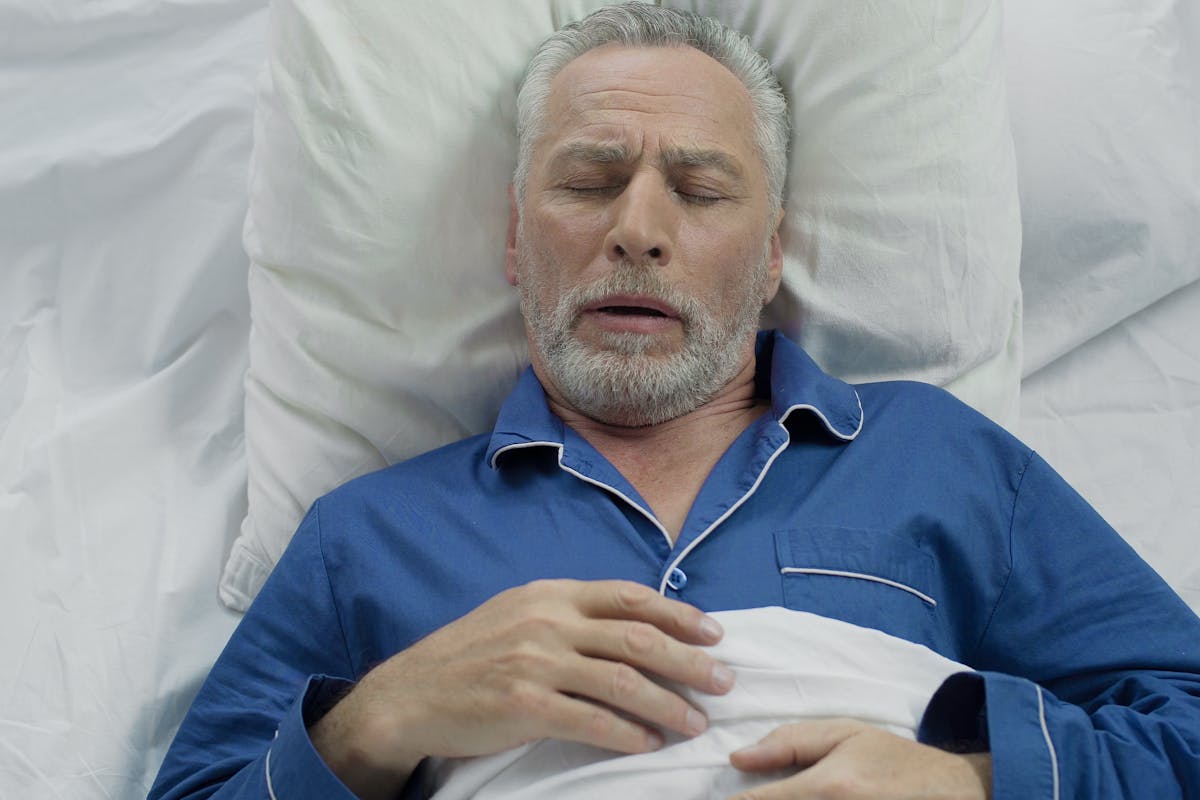What Is Sleep Apnea and What Causes It?

If you or someone you live with has a snoring problem, it may be causing more harm than you think. While most of us associate loud snoring with sleepless nights for the rest of the family, studies show a dangerous link between snoring, sleep apnea, heart disease, and stroke.
Let’s begin by discussing what sleep apnea is and how many people suffer from it. Then we’ll talk about how it’s diagnosed and treated.
What Is Sleep Apnea?
Here’s a quick overview of what we know about sleep apnea:
- Sleep apnea is a disorder that affects as many as one in five Americans.
- It occurs when there is a “pause” in the sleeper’s breathing. It may happen from 5 to 30 times per hour. The person wakes up gasping for air. Oftentimes they don’t realize what is happening.
- This condition prevents restful sleep from occurring. Those living with sleep apnea wake up feeling tired.
- The most common type is obstructive sleep apnea. It is generally believed to be caused by obesity.
- Sleep apnea is a proven cause of hypertension, more commonly known as high blood pressure. Hypertension is a leading cause of heart disease and strokes.
How Is Sleep Apnea Diagnosed?
If you or a loved one doesn’t seem able to get a refreshing night’s sleep, the first step in getting a diagnosis is to schedule an appointment with your primary care physician. They will likely conduct a physical exam to see if an undiagnosed health condition is the underlying cause. Sleep apnea will probably be considered, and the doctor may order a sleep study.
These tests are usually conducted overnight in a sleep center or sleep testing facility. Some insurance policies also cover home sleep studies with special equipment. If your doctor orders this test, good information to review is Sleep Study (Polysomnography) from Cleveland Clinic.
Treating Sleep Apnea
There are a variety of methods used to treat sleep apnea, depending on how severe it is. One of the leading ways is to lose weight. Roughly 70% of people who have sleep apnea are obese.
Other methods include nasal decongestants and surgery. An oral appliance that looks like a mouth guard is effective for some types of sleep apnea. And one of the more common methods of treatment is using a continuous positive airway pressure device, also known as a CPAP, at night.
A CPAP machine has a mask that is worn over the nose during sleep. It keeps airflow going continuously or intermittently to keep the sleeper’s airways from collapsing.
The bottom line on sleep apnea is that it is usually treated quite easily. And results are almost immediate. Blood pressure begins coming down right from the time treatment starts. That helps to lower your risk of heart disease and stroke. And if you’re wondering what else you can do to protect your cardiovascular health, 8 Ways to Live a Heart-Smart Lifestyle will be of interest.